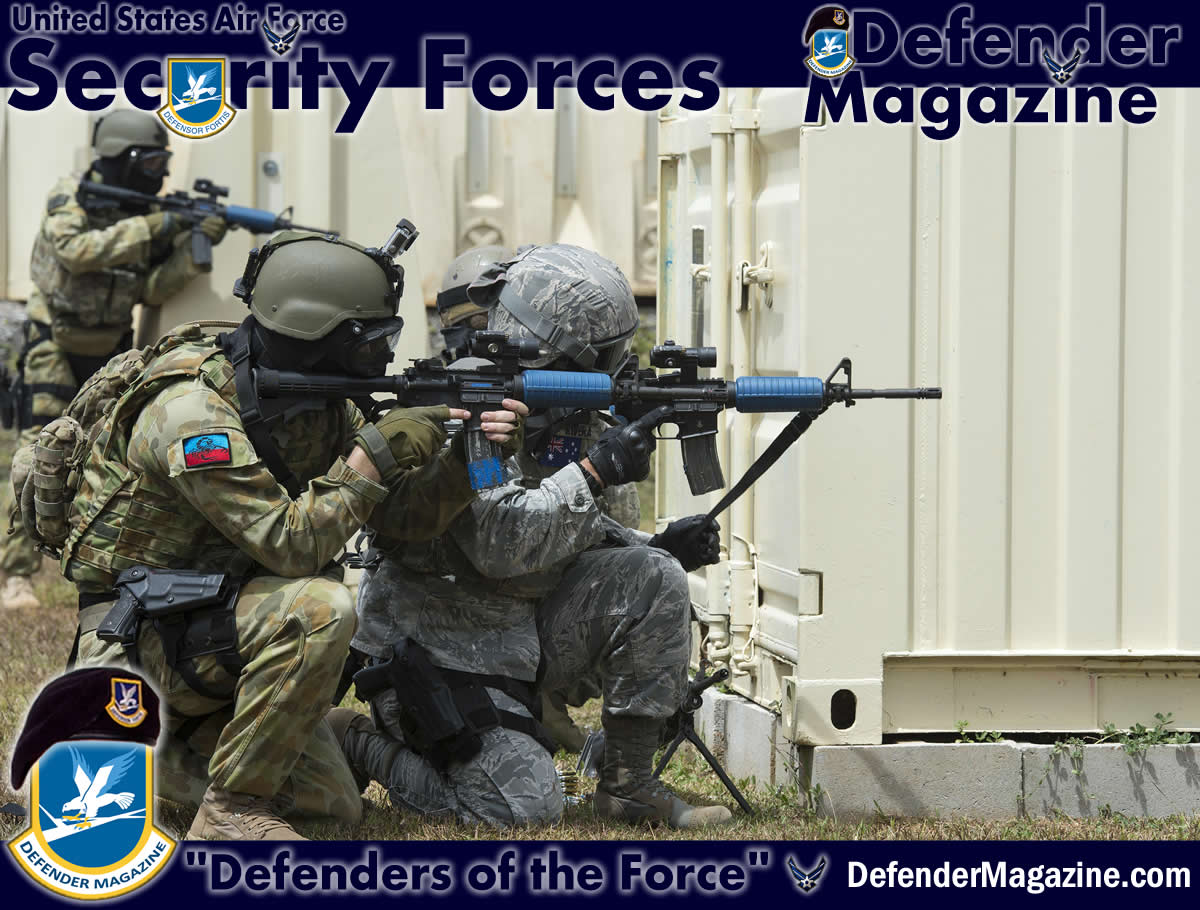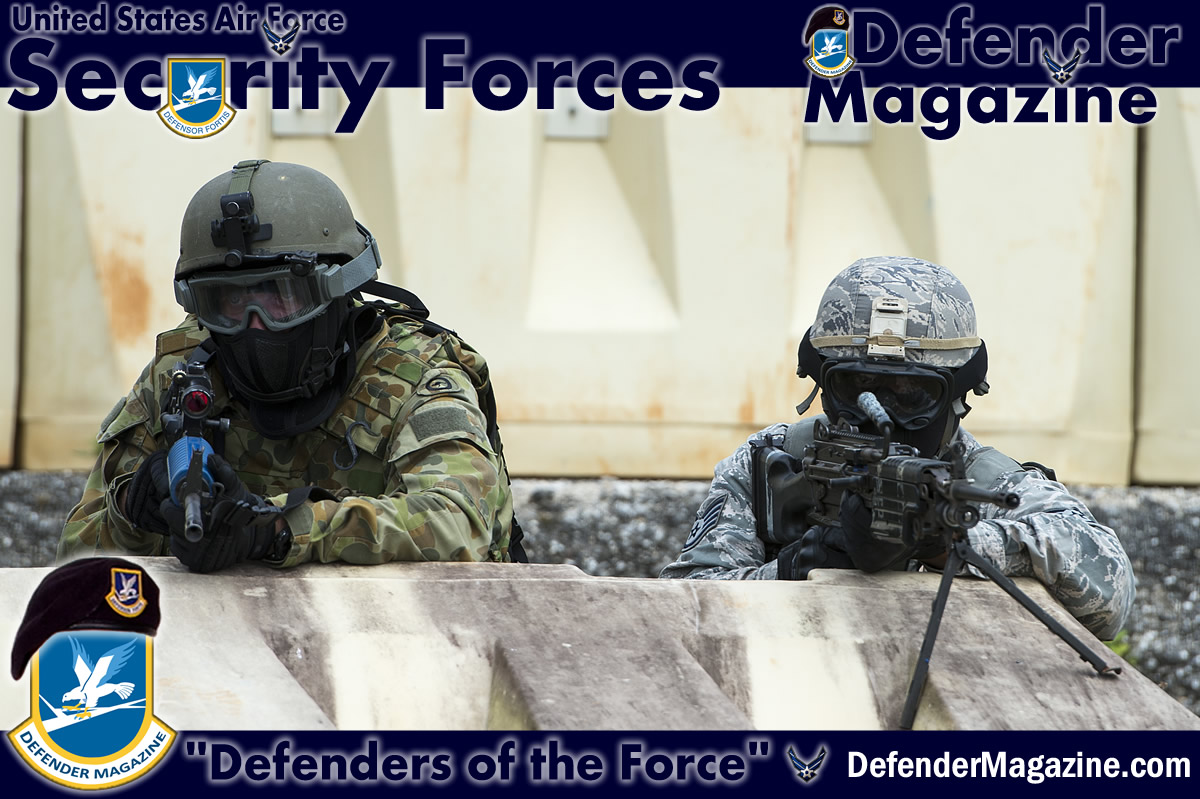03/02/15 – ANDERSEN AIR FORCE BASE, Guam (AFNS) — Pilots from the U.S. Air Force, Japanese Air Self-Defense Force and Royal Australian air force conducted large force employment (LFE) training here Feb. 19-27, as part of exercise Cope North 2015.
This year marks the 86th iteration of the multilateral training exercise, which is a long-standing, multinational event designed to increase interoperability and improve combat readiness and develop a synergistic disaster response capability between the countries involved.
Two major focus areas of the exercise included humanitarian aid and disaster relief in the first half, followed by LFE in the latter portion of Cope North.
The LFE is considered a more traditional air combat exercise where a large number of fighter aircraft come together with aerial refuelers and command-and-control aircraft in complex air combat scenarios while employing offensive and defensive-counter air techniques. Offensive-counter air is where the pilots practiced going in a large formation of aircraft to conduct bombing campaigns on a target location at the Farallon de Medinilla Range, 160 nautical miles north of Guam, and defensive counter air is where they protected an area from simulated enemy attacks.
“There’s lots of stuff going on in this scenario, lots of different aircraft,” said RAAF Group Capt. Phil Gordon, the Cope North 15 RAAF exercise director. “It’s very complex and that complexity of training is what is really valuable to us because having those differences, having those different assets is something that we’re going to see in real-world operations.”
The beginning of the training scenarios started with dissimilar air-combat training that featured smaller formations of aircraft fighting each other to build up and gain understanding of techniques and procedures of the countries working together, progressing to larger formations as the days went on with up to 50 aircraft in the air at one time working on the same scenario. In total, the pilots flew more than 1,450 missions and delivered nearly 100 weapons in the nine-day period.
“As a pilot it’s very awesome because we can learn a lot from each other — because we have our different stuff, we have different tactics, procedures — so we can understand each other, and personally it’s very fun,” said JASDF Capt. Kento Yamasaki, a Cope North 15 pilot, in regards to working with the Australian and U.S. forces.
In addition to the traditional air combat scenarios, mobility aircrews tested their ability to conduct airdrops in hostile areas, and for the first time, RAAF members joined a U.S. Air Force C-130 Hercules aircrew to observe and exchange airdrop techniques. The U.S. members received training on dropping the RAAF heliboxes, a small box with flaps shaped like rotor blades that can hold approximately 15 pounds of supplies, while the RAAF observed low-cost, low-altitude airdrops to gain better understanding of the process to be able to apply that capability on their own in the future.
“Interoperability is the biggest thing we’re getting out of it,” said U.S. Air Force Maj. Matt Andrews, the Cope North 15 chief exercise instructor. “Ideally if we do this together in a training environment, it’ll go smoother in combat.”
Andersen AFB started hosting Cope North annually in 1999, but the event was previously held in Japan up until that point as often as four times per year. The next Cope North exercise is slated for early 2016.
By Staff Sgt. Melissa B. White,
Pacific Air Forces Public Affairs
Published March 02, 2015
U.S. Air Force Airmen and Royal Australian air force airfield defense guards work as a team to eliminate an opposing force, while participating in a force-on-force combat scenario during exercise Cope North 15, Feb. 23, 2015, at the Commando Warrior Pacific Regional Training Center on Andersen Air Force Base, Guam. Through training exercises such as Cope North 15, the U.S., Japan and Australia air forces develop combat capabilities, enhancing air superiority, electronic warfare, air interdiction, tactical airlift and aerial refueling. The U.S. Air Force Airmen are assigned to the 736th Security Forces Squadron. (U.S. Air Force photo/Tech. Sgt. Jason Robertson)
U.S. Air Force Airmen and Royal Australian air force airfield defense guards work as a team to eliminate an opposing force, while participating in a force-on-force combat scenario during exercise Cope North 15, Feb. 23, 2015, at the Commando Warrior Pacific Regional Training Center on Andersen Air Force Base, Guam. Through training exercises such as Cope North 15, the U.S., Japan and Australia air forces develop combat capabilities, enhancing air superiority, electronic warfare, air interdiction, tactical airlift and aerial refueling. The U.S. Air Force Airmen are assigned to the 736th Security Forces Squadron. (U.S. Air Force photo/Tech. Sgt. Jason Robertson)


